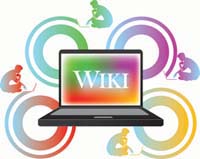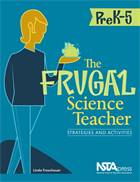
Bird footprints in fresh snow
With 18 inches on the ground, and another 2–4 inches of snow due Tuesday, is it any wonder I’m thinking of how to make the most of this unique material in school? When we get back to school we’ll look for signs of animal activity and read to learn how animals live in the snow.
Earlier in the week (before the fourth snow day this year—now we’re up to six) I read a book about animals who live in the snow with groups of 4-10 children:
Who Lives in the Snow? by Jennifer Berry Jones, illustrated by Consie Powell (Roberts Rinehart Publishers, 2001).
The detailed ¾ cut-away pictures allow readers to look under the snow and see what animals are doing. The children enjoyed pointing to and counting the animals, asking about the animal names, and talking about what animals they are familiar with. The weasel was a new one for my East coast city kids but they did recognize the fox. Some groups of preschool children will want to hear the entire text on each page but most will be happier with less. Each time you read it the children will want a little more. The information is fascinating and the glossary helps with new terms. Did you know that the vole uses a network of tunnels under the snow and that snow can actually flow like water?
I’m eager to read another book, Under the Snow by Melissa Stewart, illustrated by Constance R. Bergum (Peachtree Publishers, 2009), which has a similar theme but introduces some different animals. The publisher offers a simple, appealingly silly, Readers’ Theater script at http://peachtree-online.com/pdfs/UndertheSnowRT.pdf.
Children may be more familiar with what traces of animal activity they see on top of the snow. They enjoy finding footprints in snow, mud, or sand and guessing who made them. I made fake dinosaur footprints in the snow and the children noticed them (but nobody was fooled).
 Mystery Animal Tracks: A photo riddle book by Kelly Barnhill (Capstone Press, 2010) introduces tracks with a human example and then gives text clues to the owner of each footprint before revealing the animal that made it on the next page. The text clues only work if the children have some familiarity with the animal so you can omit them or skip the misleading ones such as “Backwards Bounder” for a rabbit. It’s unfortunate that the raccoon was labeled a “bandit” with the markings of a “robber’s mask”. But the photos of footprints in place show how the animal moved in addition to the shape of their feet. You can wonder aloud, “I wonder why (this animal) has big/small/padded/hoofed feet?” to begin a conversation about how feet function.
Mystery Animal Tracks: A photo riddle book by Kelly Barnhill (Capstone Press, 2010) introduces tracks with a human example and then gives text clues to the owner of each footprint before revealing the animal that made it on the next page. The text clues only work if the children have some familiarity with the animal so you can omit them or skip the misleading ones such as “Backwards Bounder” for a rabbit. It’s unfortunate that the raccoon was labeled a “bandit” with the markings of a “robber’s mask”. But the photos of footprints in place show how the animal moved in addition to the shape of their feet. You can wonder aloud, “I wonder why (this animal) has big/small/padded/hoofed feet?” to begin a conversation about how feet function.
 Your children may enjoy making handprints and footprints in playdough indoors after exploring what prints they can find or make outdoors in snow, sand, or mud.
Your children may enjoy making handprints and footprints in playdough indoors after exploring what prints they can find or make outdoors in snow, sand, or mud.
Peggy



 Consider the facility that students have with electronic communications and games. They somehow had to “learn” how to use these tools and figure out the rules and strategies of the games. But I heard some teachers talking about how “students do not want to learn.” The evidence the teachers had for their statement was their observation that “Students don’t do their assignments.”
Consider the facility that students have with electronic communications and games. They somehow had to “learn” how to use these tools and figure out the rules and strategies of the games. But I heard some teachers talking about how “students do not want to learn.” The evidence the teachers had for their statement was their observation that “Students don’t do their assignments.”
 Teachers use several strategies at the end of the school year. One strategy is to try to cram in as many topics as possible in an effort to “cover” everything. Other teachers use culminating or capstone projects to integrate concepts and give students a chance to use what they’ve learned in science (and other subjects). Environmental investigations are a natural for these projects. The projects described in this issue highlight the students’ research questions and how they share the results of their authentic investigations:
Teachers use several strategies at the end of the school year. One strategy is to try to cram in as many topics as possible in an effort to “cover” everything. Other teachers use culminating or capstone projects to integrate concepts and give students a chance to use what they’ve learned in science (and other subjects). Environmental investigations are a natural for these projects. The projects described in this issue highlight the students’ research questions and how they share the results of their authentic investigations:
 I’m hoping that secondary teachers will take a look at the articles that describe authentic investigations conducted by young scientists in their communities:
I’m hoping that secondary teachers will take a look at the articles that describe authentic investigations conducted by young scientists in their communities: 






